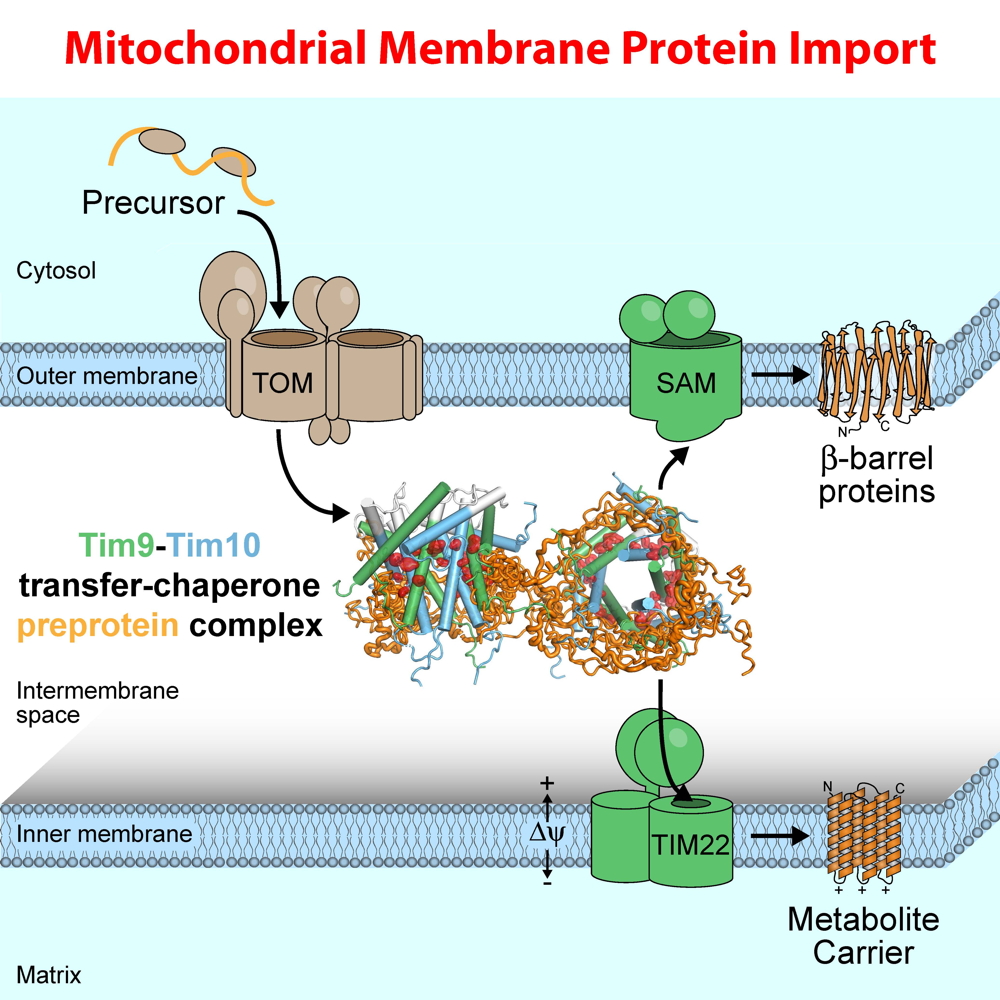Mitochondria synthesize the adenosine triphosphate (ATP) molecule, which is able to transport chemical energy within cells. The amount of ATP transported daily through the mitochondrial membranes to supply our cells corresponds approximately to our body weight. This transport of mitochondrial ATP is carried out by membrane proteins, produced themselves outside the mitochondria, and which have to be inserted into the membrane where they « work ». Because these membrane proteins are insoluble in cells, their transport is extremely difficult: they may aggregate, which would be a great danger for the cell. Cells have therefore developed carriers of these membrane proteins known as "chaperones". The essential chaperones escort membrane proteins through the intermembrane space, but the structural and mechanistic details remain elusive.
Scientists from the IBS, in collaboration with EMBL, Freiburg and Tübingen Universities in Germany and University of Copenhagen in Denmark, used an integrated structural biology approach to reveal the functional principle of TIM chaperones: multiple clamp-like binding sites hold the mitochondrial membrane proteins before releasing them to their final destination.
These findings, published in
Cell on November 15, may be helpful to fight diseases caused by the accumulation of protein molecules, in particular the Mohr-Tranebjærg syndrome, a neurological disorder of deafness and dystonia, caused by a dysfunction of these chaperones.
